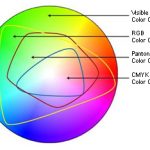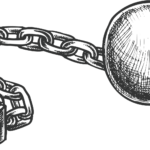Fine artists that sketch, draw, do engraving, silkscreen or paint have a tougher path to replicating their output than digital artists and photographers. Since the material starts in an analogue form, making a reproduction means creating a digital file that can be used to image the reproduction media.
Why not just take a photo? The answer is that all except the highest-end professional cameras don’t match the dMax, maximum density that contributes to sought-after ‘good blacks’ and excellent contrast and balance in the digital file. Further, optical distortion introduced by the lens optics of the taking camera will change the image somewhat. Although this problem can be compensated with software, it’s not an ideal solution since the alterations introduced by the software might be a problem for archivists and for purists.
One thing to keep in mind is that there is no utterly exact method of reproduction. There will be some variation from the original that will be detectable. Obviously, this is a good thing on some level. Most fine artists don’t intend to become their generation’s Currier and Ives. Still, for fine artists and their fans, reproduction is a way to own an authorised piece of art that would otherwise be inaccessible.
On the other hand, it is possible for the fine artist to begin the creative process with reproduction in mind. Rather than following the digital route, there are many methods of reproduction, like silkscreen, seriagraph, lithograph, engraving and many other systems that allow for direct, analogue creation of multiple pieces of essentially the same work.
If this is not the intent, the question returns to the process of digital reproduction. There are two methods for acquiring digital files for further production from painting, watercolor and other hand works. Very large format flatbed scanning, very much like a giant copier, only with extreme resolution and precise colour, is the more expensive and more precise method, arguably. The use of a large-format camera, 4×5 inch, usually, with an extremely high-resolution digital back in place of film is the other method. I say ‘arguably’ because the differences are so minute as to become the domain of subjective interpretation. It might be advisable for the artist or his agent to discuss the goal of the capture process with the vendor and do some tests to determine if one process is preferable.
Here are links to a number of vendors with good reputations in the industry:






